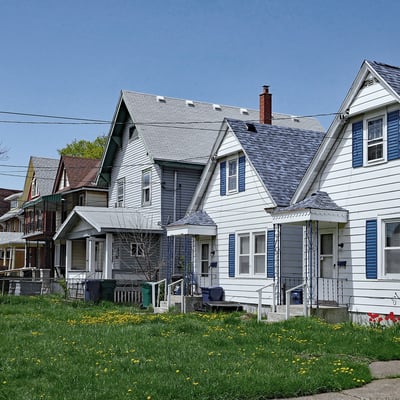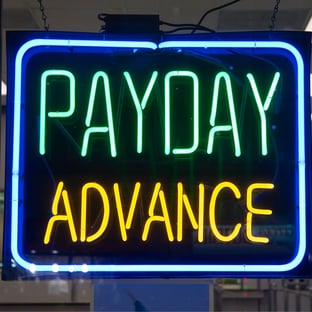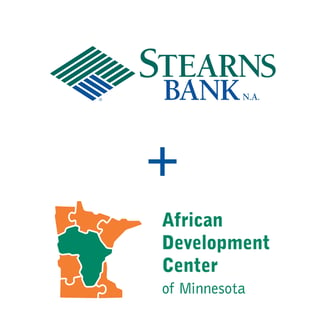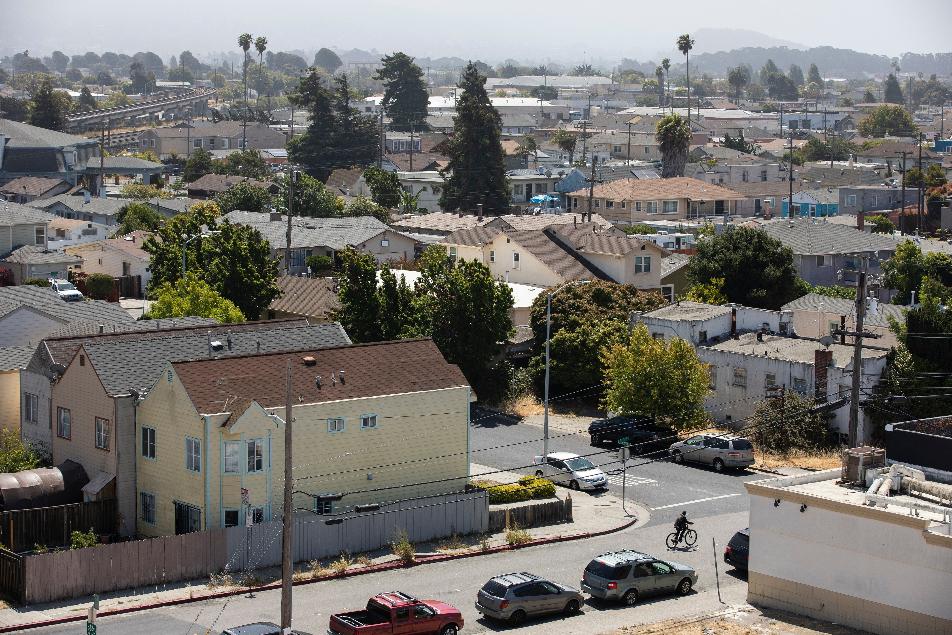Low-to-Moderate Income (LMI) communities are commonly referred to as the working poor and the middle class. Of course, as living expenses vary greatly across the United States, what’s considered middle-class income in one area may be perceived as upper-class income in another.
Currently, the United States government defines a low-income community as a place where “there is a median family income of less than 50% of the area median income.” A moderate-income community means that the median income is between 50-80% of the area median income.
However you define it, big banks have historically failed to serve LMI communities in many ways. But where some banks have largely continued to do business as usual, or have simply made adjustments to comply with new federal regulations, others are helping to drive historic and fundamental change.
What Is a Bank’s Responsibility to Serve LMI Community Members?
The federal government passed The Community Reinvestment Act (CRA) in 1977 to encourage banks to meet the needs of the communities in which they are located, including LMI neighborhoods.

Unfortunately, despite the CRA and other fair lending laws, 93% of bank branch closures since 2008 have been in LMI neighborhoods. While it’s easy to associate bank deserts with urban areas, most bank deserts are actually located in sparsely populated areas. Recent branch closures are felt keenly throughout rural America, where the next closest branch may be much farther away, and the lack of high-speed internet may hinder online banking.
For this reason alone, many banks appear to be failing to meet their CRA responsibilities. However, the Federal Reserve Board and the Federal Deposit Insurance Corporation are proposing new rules to strengthen and modernize the Act, which was last updated in 1995.
How Have Banks Failed to Serve LMI Communities?
Many banks have served their communities well and can be a vital community asset, but it’s hard to drive change throughout an industry unless the industry reckons with its history and understands where improvements still need to be made. In addition to accessibility issues, the banking industry as a whole has an unfortunate history of problematic lending practices that have harmed low-income neighborhoods as well as black communities.
Furthermore, while experts agree that access to reputable, stable, mainstream banking is critical to lifting millions out of poverty, access to banks remains a challenge for LMI communities within the United States. Banks frequently don’t have branches within LMI communities. When they do, they tend to compensate for less profitable LMI accounts by imposing overdraft fees, and fees for wire transfers, debit card swipes, and ATM use.
Why Banks Still Struggle to Lend to Entrepreneurs From LMI Communities
When LMI communities have access to banks, traditional banking services can help keep wages secure and can reduce crime. This crime reduction, in turn, can further contribute to financial stability and entrepreneurial success. Furthermore, increasing entrepreneurship is one of the key ways to lower poverty: statistics show that for every 1% increase in the rate of entrepreneurship in a state, there is a 2% decrease in poverty.
However, even where LMI communities are served by branch locations, they frequently don’t have full access to the necessary services and capital they need to be successful entrepreneurs. Would-be entrepreneurs with low incomes still find it difficult to get funding from banks to start or grow their businesses.
While getting denied for a loan can feel personal, banks are much like insurance companies in that they have to make business decisions based on evaluating risk. Unfortunately, even banks with a deep desire to help their low-income customers start a better life will have many challenges in doing so. Lending within LMI communities often poses more risk to lenders because entrepreneurs may have:
- Limited personal savings, and no family relationships with the ability to invest in their business
- A low credit score or lack of sufficient credit history
- Faced a past financial crisis, like bankruptcy or medical debt
- Insufficient collateral
- A household without a second earner
- Limited business management experience
Additional Barriers Between the LMI Community and Traditional Banking
While it may seem like the only obstacles standing between traditional banking services and the LMI community may rest entirely with banks, additional barriers have evolved that can’t be fixed simply by an update to the CRA, more equitable lending practices, and more accessible branch locations…at least, not right away.
Consumers need to be able to trust their banks. But the truth is that the only industry in the United States that earns less consumer trust than banking and finance is the media. Consumer trust in the banking and finance industry has only gotten worse since the pandemic, and bank mistrust is especially widespread in low-income areas. And while many consumers tend to mistakenly assume that all banks are the same, those who have had a bad experience at one bank may carry that mistrust forward to include all banks.
industry in the United States that earns less consumer trust than banking and finance is the media. Consumer trust in the banking and finance industry has only gotten worse since the pandemic, and bank mistrust is especially widespread in low-income areas. And while many consumers tend to mistakenly assume that all banks are the same, those who have had a bad experience at one bank may carry that mistrust forward to include all banks.
While many banks haven’t catered to LMI communities, and some have actively excluded them, others may simply be lacking awareness of how to best improve access and build trust. But just like in most other industries, providing customer service, flexibility, and understanding can go a long way.
How Can Banks Overcome Barriers and Drive Change?
Where there is a problem, there is also a solution. Many banks that desire to be part of that solution have found that partnering with other organizations, even those outside their geographic area, can improve access and reduce mistrust. Partnerships are often mutually beneficial, as community organizations can also help banks located within LMI communities improve their compliance with the CRA.
Partnership With CDFIs
Community Development Financial Institutions (CDFIs) aren’t the same as banks. They are mission-driven and help create economic opportunities for individuals and businesses. CDFIs can help banks serve the needs of underserved populations and LMI communities in a few different ways. But in terms of lending, CDFIs can help banks offer loans that may pose more risk and can help banks provide more flexibility in the loans they offer.
Partnership With MDIs
Minority Depository Institutions (MDIs) can be either banks or credit unions that are managed primarily by African Americans, Asian Americans, Hispanic Americans, or Native Americans. Banks can help MDIs extend more capital into minority communities while adding stability and reducing risk.
Education
One of the main reasons banks turn down small business loans is because the owner lacks awareness about their business credit score and how it could affect their chances of getting capital. Many banks are working hard to improve transparency around finance, including developing free online tools to help their customers understand how credit works, how to improve their scores, how to manage expenses, and how traditional banking tools can help them save money. For example, Stearns Bank has various free online tools to help its customers manage and boost their credit, protect their identity, and avoid fraud.
How Stearns Bank Is Standing for Change
Banking and financial institutions are just as varied as any other industry. Banks can have widely different policies, services, fees, and interest rates and can provide fundamentally different experiences. While it can be hard to separate marketing from the equation, a quick look at Deposit Accounts can illustrate some key differences in rates. For example, Stearns Bank’s money market rates are significantly higher than the national average.
BankOn, a coalition of government agencies, financial institutions, and community agencies, is working together to improve the financial stability of underbanked communities. With BankOn, those who want to establish a bank relationship but have hesitations about fees, are able to access safe and affordable checking accounts. Stearns Bank is proud to participate in this endeavor with the BankONStearns™ account. This non-interest-bearing checking account provides access to convenient services like mobile banking, remote deposit, direct deposits, and so much more.
Stearns Bank has also earned a reputation as a friendlier bank — one that gets to know its community and combines an impressive national reach with what many entrepreneurs describe as a small-town bank feel. Our lending team takes the time to get to know the ins and outs of the many small businesses they work with and has prioritized long-term relationships with our customers. The team also takes pride in offering more flexibility to small businesses and will proactively reach out in times of hardship to support companies that may be struggling.
Even by starting small, banks across the country can make a difference. Small actions toward change will eventually multiply into large reforms across the entire banking industry.
Stearns Bank’s Commitment to Change
Stearns Bank has formed a partnership with the African Development Center (ADC), a leader in micro-lending to small businesses with locations in Minneapolis, St. Cloud, Rochester, and Willmar. Minnesota currently has over 100,000 African immigrants, and the ADC is working to reduce barriers and facilitate better outcomes for African immigrants and African Americans throughout the state. In addition, Stearns Bank further commits to reducing barriers through a partnership with Project REACh (Roundtable for Economic Access and Change). Together, we have pledged to support minority deposit institutions, as well providing resources, training, and skills.
Cloud, Rochester, and Willmar. Minnesota currently has over 100,000 African immigrants, and the ADC is working to reduce barriers and facilitate better outcomes for African immigrants and African Americans throughout the state. In addition, Stearns Bank further commits to reducing barriers through a partnership with Project REACh (Roundtable for Economic Access and Change). Together, we have pledged to support minority deposit institutions, as well providing resources, training, and skills.
Stearns Bank also intends to add new partnerships around its branch locations and design new initiatives to expand access to capital, banking services, and financial empowerment resources to the underserved. Although a national bank, Stearns Bank does not rely on a collection of brick-and-mortar locations. Rather, we remain committed to providing convenient access to mobile banking, personal service, and a dedicated team that answers calls on the first ring.
These commitments may be relatively new, but they reflect time-tested values at Stearns Bank. We are firm in our belief that lending has the power to change lives because we see it happen every day. We may not be able to drive national change, but big changes often start in small and unexpected places.
Our roots in Midwestern Minnesota have allowed us to witness the power of small businesses to lift entire families out of poverty. Being just one part of that process, one small step of an entrepreneur’s journey, one lender who says yes where others say no, is why we get up in the morning. It’s why we do what we do, and we’re working hard to ensure we’re there for anyone who needs us.
